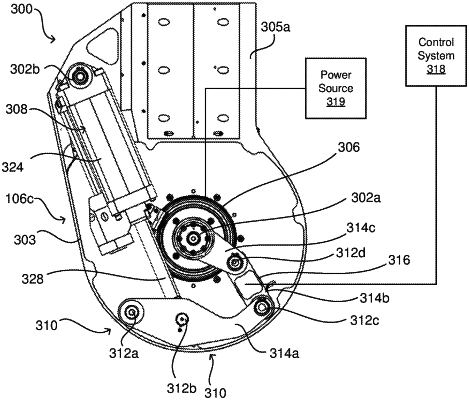| CPC B25J 9/0006 (2013.01) | 46 Claims |

|
1. A robotic joint system with integrated safety comprising:
a first support member and a second support member;
a tunable actuator joint assembly rotatably coupling the first support member to the second support member, the tunable actuator joint assembly comprising a joint having an axis of rotation about which the first support member and the second support member rotate, the tunable actuator joint assembly comprising:
a primary actuator operable to apply a primary torque to facilitate actuation of the first and second support members about the joint; and
a quasi-passive linear pneumatic actuator coupled between the first and second support members and operable to apply a secondary torque to facilitate actuation of the first and second support members about the joint, the quasi-passive linear pneumatic actuator comprising:
a housing that is gas pressure charged with a gas at a selected gas pressure;
a piston supported within the housing and a piston rod extending from the piston, wherein the piston and the piston rod are movable in a linear motion within the housing, and wherein the piston divides a compression chamber and an expansion chamber within the housing;
a gas passageway that fluidly connects the compression chamber and the expansion chamber; and
a valve in fluid communication with the gas passageway that selectively restricts flow through the gas passageway, wherein the valve is operable to default to an open position,
wherein the quasi-passive linear pneumatic actuator comprises an active state with the valve closed, such that the piston compresses the gas in the compression chamber to cause the quasi-passive linear pneumatic actuator to store energy upon a first rotation of the first and second support members about the joint and to release energy upon a second rotation of the first and second support members about the joint in a direction opposite a direction of the first rotation to apply the secondary torque to facilitate the first and second rotations of the first and second support members about the joint, and
wherein the quasi-passive linear pneumatic actuator comprises an inactive state with the valve open, such that gas flows through the gas passageway between the compression chamber and the expansion chamber, and a net force acting on the piston biases the piston and piston rod to an extended position, such that the secondary torque is applied to facilitate return of the first and second support members to a default position about the joint.
|